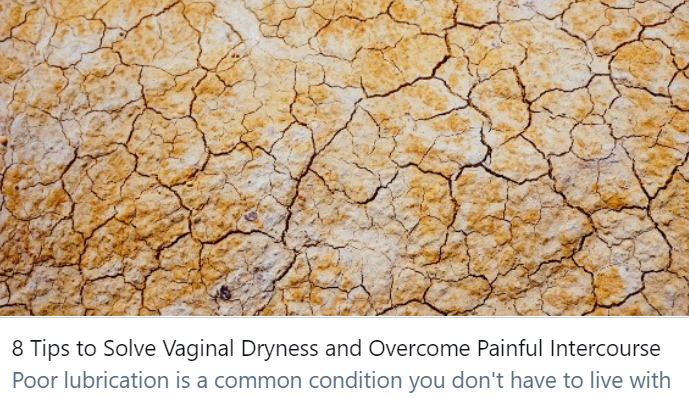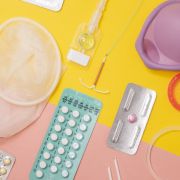Understanding Hormones: The roles of Estrogen and Progesterone
How Estrogen and Progesterone levels affect women and men.
Estrogen and progesterone are hormones that are important for sexual and reproductive development in women. Estrogen and progesterone help to regulate a woman’s menstrual cycle and play an important role in pregnancy. While they are often thought of as ‘female hormones’, both estrogen and progesterone are also found in men.
To understand how these hormones are manufactured we need to look more closely at the ovaries, the site of production of estrogen and progesterone in women. The ovaries produce and release the two groups of sex hormones — progesterone and estrogen.
Estrogens
Estrogens are broken down into three groups, known as
- Estradiol (E2): the most common type in women of childbearing age
- Estrone (E1): the only estrogen your body makes after menopause (when menstrual periods stop)
- Estriol (E3): the main estrogen during pregnancy
These substances work together to promote the healthy development of female sex characteristics during puberty and to ensure fertility. Estrogen also has other functions:
- Keeps cholesterol in control
- Protects bone health for both women and men
- Affects your brain (including mood), bones, heart, skin, and other tissues
Estrogen (estradiol, specifically) is instrumental in breast development, fat distribution in the hips, legs, and breasts, and the development of reproductive organs. The ovaries also release two other hormones, relaxin (released prior to giving birth) and inhibin (used to inhibit follicle-stimulation hormone secretion)
Progesterone and estrogen are necessary to prepare your uterus for menstruation. The hypothalamus, a small region located at the base of your brain, triggers their release. Once you reach puberty, the ovaries release a single egg each month — this is called ovulation.
If a woman is pregnant, the pregnancy will trigger high levels of estrogen and progesterone, which prevent further eggs from maturing. More hormones are released during pregnancy than at any other time of a woman’s life, but during menopause — which marks the end of fertility — estrogen levels fall fast. This can lead to a range of menopausal symptoms.

Photo by Briana Tozour on Unsplash
How Estrogen levels affect you
Low Estrogen:
Women. The most common reason for low estrogen in women is menopause or the surgical removal of the ovaries. Estrogen supplementation is often prescribed to alleviate menopausal symptoms. Symptoms of low estrogen include:
- Menstrual periods that are less frequent or that stop
- Hot flashes (suddenly feeling very warm) and/or night sweats
- Trouble sleeping
- Dryness and thinning of the vagina
- Low sexual desire
- Mood swings
- Dry skin
Some women also get menstrual migraines, a bad headache right before their menstrual period, because of the drop in estrogen.
Men. Low estrogen in men can cause excess belly fat and low sexual desire.
High Estrogen:
Women. Excess estrogen can lead to these problems, among others:
- Weight gain, mainly in your waist, hips, and thighs
- Menstrual problems, such as light or heavy bleeding
- Worsening of premenstrual syndrome
- Fibrocystic breasts (non-cancerous breast lumps)
- Fibroids (noncancerous tumors) in the uterus
- Fatigue
- Loss of sex drive
- Feeling depressed or anxious
Men. High estrogen in men can cause:
- Enlarged breasts (gynecomastia)
- Erectile dysfunction
- Infertility
The Role of Estrogen
Estrogen is combined with progesterone is used in various birth control methods to suppress ovulation. Estrogen is used to alleviate menopausal symptoms such as hot flashes and vaginal dryness.
Testing Estrogen Levels
This is easily done with a simple blood test that will allow your doctor to check any one of the three forms of the hormone. Estrogen testing must be coordinated with a doctor as the interpretation of the results is often misunderstood.
Progesterone
Progesterone is a steroid hormone belonging to a class of hormones called progestogens. It is secreted by the corpus luteum, a temporary endocrine gland that the female body produces after ovulation during the second half of the menstrual cycle.
Synthetic steroid hormones with progesterone-like properties are called progestins. Progestin is often combined with estrogen in oral contraceptive pills. Progesterone is used as a single hormonal contraceptive in the Depoprovera shot and certain intrauterine devices.
Progestin is also useful in treating common menopausal symptoms.
How does Progesterone Work?
Progesterone prepares the endometrium (the mucous membrane lining the womb) for the potential of pregnancy after ovulation. It triggers the lining to thicken to accept a fertilized egg. It also stops the muscle contractions in the uterus that would cause your body to reject an egg. While the body is producing high levels of progesterone, you will not ovulate.
If you do not become pregnant, the corpus luteum breaks down, lowering the progesterone levels in your body. This signals your body to start menstruation. If you do conceive, progesterone continues to stimulate your body to provide the blood vessels in the endometrium that will feed your growing fetus.
Once the placenta develops it begins to secrete progesterone in place of the corpus luteum. This causes the levels to remain elevated throughout the pregnancy, so your body does not produce more eggs. It also helps prepare the breasts for milk production.
In men, progesterone is known as the calming, mood, sleep, libido, and bone-enhancing hormone. Progesterone functions as a precursor in men to produce testosterone while also acting as a balance to decrease estrogen levels. Progesterone is produced by men’s adrenal glands and testes.
The Role of Progestins
Progesterone isn’t absorbed well when taken as a pill. Synthetic progestins were created to bind to progesterone receptors in the body and create similar effects as progesterone. Progestin can change the lining of the uterus and stop the lining from building up.
Progestin can also be used to treat menopause symptoms such as hot flashes and vaginal dryness. Estrogen can be used alone to treat these symptoms, or it can be combined with progestin.
Women who still have a uterus must use progesterone to counter the effects of estrogen. Unopposed Estrogen increases the risk of uterine cancer. Healthcare providers may suggest an oral micronized progesterone treatment.
Progestin can also be prescribed to treat amenorrhea, endometriosis, and irregular periods.
How Progesterone levels affect you
Women with low levels of progesterone will have abnormal menstrual cycles or may struggle to conceive because the progesterone does not trigger the proper environment for a conceived egg to grow.
Women with low progesterone levels who do succeed in getting pregnant are at higher risk for miscarriage or pre-term delivery because progesterone helps maintain the pregnancy.
Low progesterone in women
- Abnormal uterine bleeding
- Irregular or missed periods
- Spotting and abdominal pain during pregnancy
- Frequent miscarriages
In addition, low progesterone levels can cause elevated levels of estrogen, which can decrease sex drive, contribute to weight gain, or cause gallbladder problems.

Photo by Kyle Glenn on Unsplash
Low progesterone in men
Symptoms of low progesterone in men include:
- Low libido
- Hair loss
- Weight gain
- Fatigue
- Depression
- Gynecomastia (“male breasts”)
- Erectile dysfunction
- Impotence· Bone loss
- Muscle loss
In addition, men with low levels of progesterone have a higher risk of developing health conditions, such as osteoporosis, arthritis, enlarged prostate, and prostate cancer.
Side effects of progestin
When taking progestin for menopausal symptoms, side effects may include:
- mood changes,
- bloating,
- headaches,
- breast tenderness.
- For newly menopausal women, breakthrough bleeding may occur.
In hormonal birth control, progestin side effects can include withdrawal bleeding and increased cramping. Other side effects may include increased blood pressure and low blood sugar.
Testing progesterone levels
Your doctor will request a serum progesterone test after drawing your blood. They may order it if you’re having trouble getting pregnant. The results can give them an indication of whether or not you’re ovulating. This can help them diagnose and manage potential fertility problems.
Your doctor might also order this test if you’re pregnant and they suspect you’re at risk of ectopic pregnancy or miscarriage. An ectopic pregnancy happens when a fertilized egg attaches itself to your fallopian tube, abdominal cavity, or cervix, rather than your uterus. Miscarriage happens when you lose a fetus during early pregnancy. Both cause low progesterone levels.
Thank you to BeingWell for publishing this article on Medium.
Blog Author: Dr. Jeff Livingston
Main Blog Photo By: Holger Link on Unsplash













